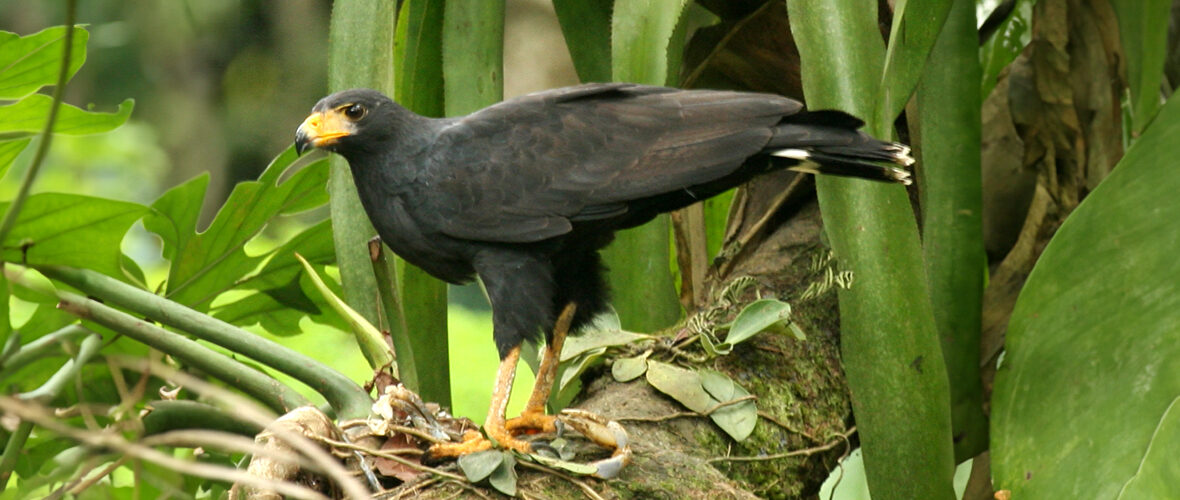
The common black hawk is a raptor in the family Accipitridae. They can be found in the southern most portions of the southwestern United States (Arizona and Texas), Mexico, Central America, and northern South America. The only threats they face are habitat destruction and accidental poisoning. The IUCN lists these birds of prey as Least Concern. Their populations are decreasing though.
First the Stats…
Scientific name: Buteogallus anthracinus
Weight: Up to 33 ounces
Length: Up to 21 inches
Wingspan: Up to 50 inches
Lifespan: Up to 7 years
Now on to the Facts!
1.) There are an estimated 2,000,000 wild individuals remaining.
2.) 2 subspecies exist: the Cuban black-hawk and the mangrove black hawk.
3.) They prefer estuaries, mangrove swamps, and adjacent dry open woodland habitats.
4.) While mainly preying on crabs and crayfish; these raptors will also prey on fish; frogs; hatchling turtles; lizards; snakes; small, young, and/or injured birds; and mice. Carrion (dead animals – in form of dead fish) and eggs are also consumed.
5.) Occasionally grasshoppers, caterpillars, and wasp larvae are also supplemented.
But wait, there’s more on the common black hawk!
6.) They have also hybridized naturally with the red-shouldered hawk in Sonoma County, California. However, natural hybridization between different genera of hawks is very rare.
7.) These birds are protected in the far north of its range under the Migratory Bird Treaty Act of 1918.
Did you know…?
These birds have a distinctive, shrill call, often times described as similar to that of an osprey.
8.) A nest is constructed of sticks and built up to 100 feet high in a tree.
9.) Females lay up to 3 eggs that hatch in up to 38 days.
10.) Chicks fledge in up to 7 weeks, but the parents continue feeding them for up to another 4 weeks.
Now a Short Common Black Hawk Video!
Be sure to share & comment below! Also, check out the Critter Science YouTube channel. Videos added regularly!
Want to suggest a critter for me to write about? Let me know here.
Some source material acquired from: Wikipedia & IUCN
Photo credit: FlightEditor



